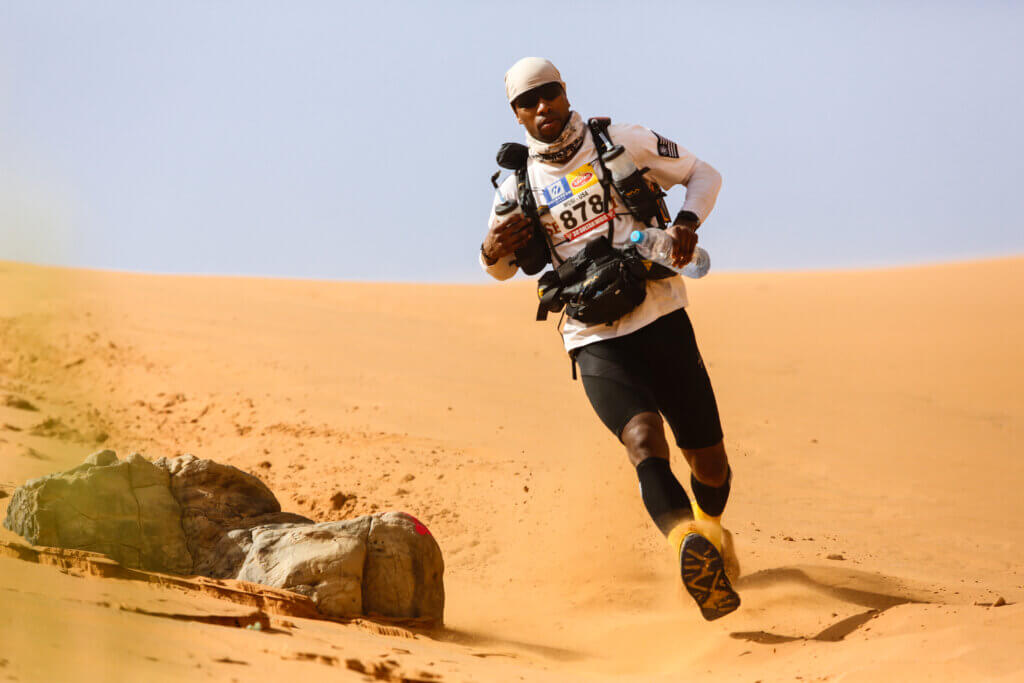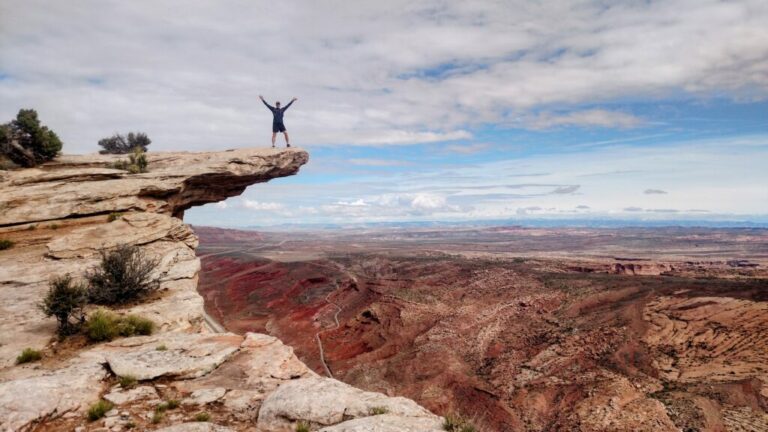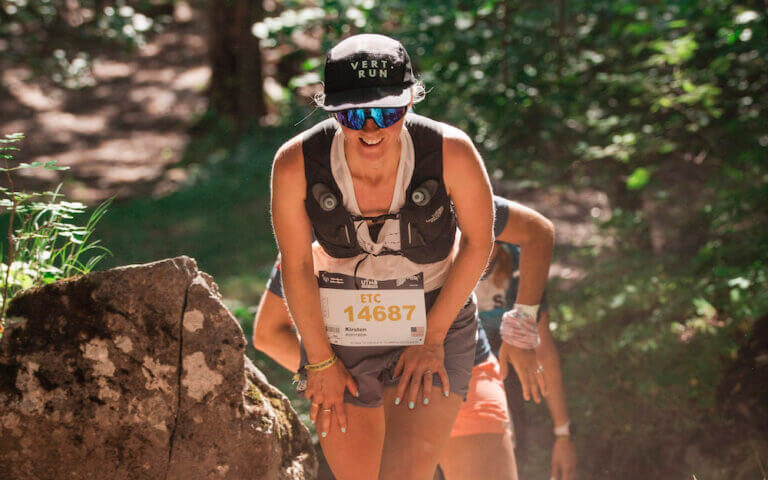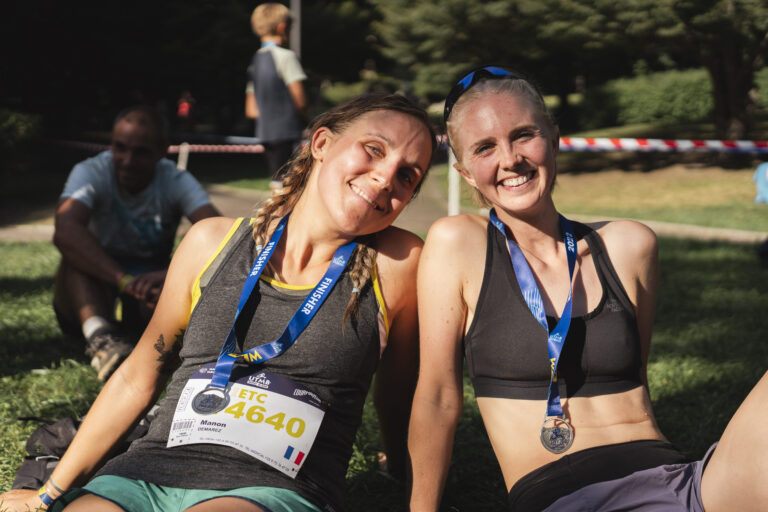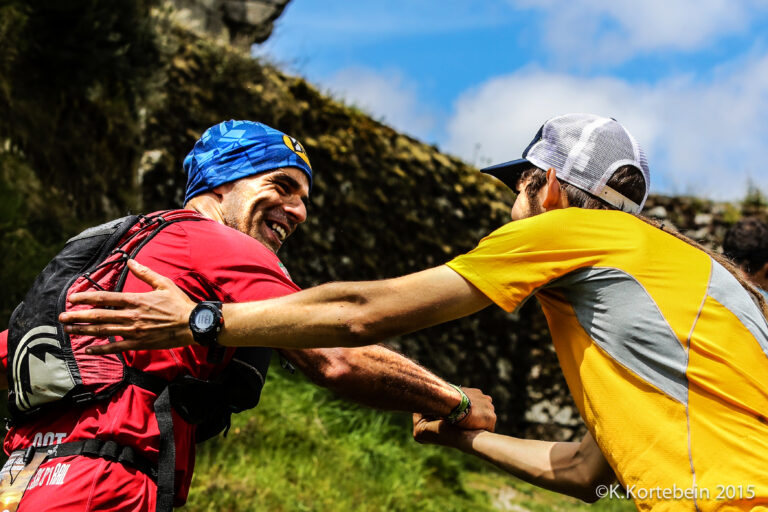My name is Francesco Puppi, I’m a professional trail runner for Nike and a coach for Vert.run. In my athletic career I have specialized in any distance that is defined as “short trail”, or what in Europe we refer to as “mountain running”: short trail races, up to the 50k distance. As a coach, I focus on creating effective running workouts to help runners improve their performance, even without access to mountains.
Today, I’m here to answer a question that many trail runners around the world have about effective running workouts for hill training without access to mountains:
“Can I train for a mountain trail race even though I live in a flat place?”
Let’s dig in!
So…you want to know if it’s possible to be a successful trail runner without having regular access to the mountains? The answer is definitely yes!
There are many examples of great athletes who live and train in a relatively flat area and compete very successfully on the trails.
Inspiration from Ruth Croft
(The first–and probably most epic–example that comes to mind: pro runner Ruth Croft trained for, won and SET THE COURSE RECORD of CCC by UTMB while living and training in the flat city of Taipei, Taiwan! We were so inspired by this that she designed this training plan in collaboration with Vert.run.)
Training Without Mountains
Anyway, back to the point. In this article, we will explore why and how it’s possible to train for the hills…without the hills!
Take my example:
- I live in a hilly area, but I can’t go out and run a VK straight from my door.
- Most of my workouts and easy runs include only modest elevation gain…but yet, one of my biggest strengths on the trails are the uphills.
- I’m lucky enough to have trails right in my backyard, and the mountains are close by, so once or twice a week I’ll do a workout or a long run which includes a big vertical gain (over 1000m or 3000ft).
- But other than that, I regularly run on terrain that most trail runners would consider quite flat.
Running Workout Plans for Flat Places
Ruth Croft’s Training Strategy
Let’s go back to the example of Ruth Croft that we mentioned earlier. Professional runner Ruth was living in Taipei, Taiwan–a flat city–when she discovered trail running.
At that time, she was doing over 90 percent of her training on a flat concrete river path. She was able to take first at the 2016 UTMB CCC (and set the course record!) and second at the 2017 Lavaredo Ultra Trail.
She says: “never stress about not having mountains or trails out your back door.”
Running Workouts: Improving Uphill and Downhill Strength
How is it possible to improve your uphill and downhill strength even if you live in a city or a flat area?
With some adaptations and creativity, and maybe a little shift in your mindset, you can still train for trail running even if the closest thing to a trail is your local city park.
The key point is to understand that running is not always enough.
While you may not be able to replicate the exact vertical gain of the races you have in your calendar, or the ideal elevation prescribed by your training plan, you can mimic the intensity to simulate it and train your muscles to develop almost the same adaptations.
Strength and conditioning
Core and strength training should be a staple in every trail runner’s training program–especially if you train in a flat place.
The best exercises are the ones that involve strengthening the muscles recruited running:
- Squats
- Half squats
- Lunges
- Calf raises
- Step ups
- Bird dogs
- Bridges
But also non specific core and strength routines (like this one that I recorded) that help us build our general strength (plank, crunches, triceps dips, push-ups..).
One interesting and scientifically proven fact about strength is that, no matter what exercise you are doing or which muscle group is involved, your general strength will improve!
Running Workouts at Stairs
You may not be able to climb Mont Blanc, but one of the easiest ways to do some real elevation gain is by running up and down a staircase.
While living and training on a cruise ship, pro runner Zach Miller won the JFK 50 mile and Lake Sonoma 50 mile races (in 2013 and 2014 respectively.)
How did he do that? By training on stairs and on a treadmill.
Don’t let living in a flat place hold you back! Make sure you put the time in, stay consistent and follow the principle of progression: running up and down stairs can be a bit mentally daunting, so it’s important to be gradual. Make it fun and take your workout to the next level adding some intensity!
Examples of Running Workouts at Stairs:
1. Stair intervals + progression run:
After a good warm-up (on flat or on the stairs), run 10 x 30 seconds uphill intervals at high intensity (8/10 RPE). You can take one or two steps at a time and even alternate, to give your body different stimuli. Once you’re done, start a progression of 30 minutes beginning with an effort of 4/10, and pushing it a little harder every 5 minutes, ending at tempo pace.
2. Stair ladder:
After a good warm-up, run this ladder two times: 3 min – 2:30 min – 2 min – 1:30 min – 1 min – 30 sec. Recover jogging down the ladder until the start, after each interval. Finish with some flat cool-down.
3. Stair circuit:
Warm-up and then run 4 floors of stairs up and down, adding a core, strength or HIIT exercise each time you are at the bottom (examples: burpees, plank, push-ups, wall sit, jumps, lunges). Continue for 30 minutes continuously.
Training Plans for Flat Places
Want to train for a mountain trail race or ultra, but you live in a flat place? No problem! We have lots of training plans for flat places–our two most popular are this 50k Ultramarathon Training Plan, and this 50 Mile Ultramarathon Training plan.
Running Workouts: Jumps
Jumps are a great way to strengthen your muscles, improve your reactivity and work on your downhill skills.
There are many ways to do jumps:
- Rope jump,
- Box jumps,
- Jump lunges,
- Jump squats,
- Plyometric jumps.
The key is: quality over quantity. Start with small amounts, stay consistent and you soon will notice the improvements.
I suggest starting with low impact exercises (such as the rope jump and box jumps) and then, once you get stronger, also thanks to the other strength and conditioning routines that you should be taking care of, continue to the more advanced exercises.
Treadmill
Some love it, some hate it: but no matter how you feel, a treadmill is definitely the most accurate simulation of uphill running.
You can virtually do any uphill workout with the treadmill: uphill tempo, uphill intervals, hilly runs, uphill strides…and it’s a very easy, useful way to train for the trails even if you live in a city (or you don’t have the possibility to run outside because it’s dark, icy or for other reasons).
Some treadmills can go up to a 30% grade or even more!
A couple of disadvantages: you cannot simulate the downhill, of course, and the foot strike is always the same. This tends to put more stress on your feet and ankles, so make sure you mix it up with some running outside (even on a flat surface) and do feet strengthening exercises.
Running Workouts at The Gym
In the gym, you will find a wide range of possibilities to improve your uphill and downhill strength. Besides the treadmill, the weights and classic gym equipment, here are a few machines that you can use:
- The stairmaster, where you can basically replicate all the stair and treadmill workouts
- The elliptical: a wonderful way to add aerobic volume and intensity + strength without the injury risk of running (it’s a low impact activity)
- The rowing machine: for resistance training and general strength, using all major muscle groups
Personalized Training Plans at Vert.run
Want to train for a mountain trail race or ultra, but you live in a flat place? No problem! We have lots of training plans for flat places–our two most popular are this 50k Ultramarathon Training Plan, and this 50 Mile Ultramarathon Training plan.
Running Workouts in the sand
Running in the sand is a great way to build uphill strength when you live in a flat place.
The added resistance of running in the sand will help simulate the effort required for climbing hills.
In the sand, you’ll want a shorter stride, an increased cadence and more arm pumping to stay balanced, similarly to uphill running.
If the sand is compact enough, you can keep your shoes on. But if the sand is deep or soft, why not try running barefoot too? It’s a great proprioceptive exercise (use the principle of progression, in duration and intensity.)
Intensity
Running uphill is hard. It puts the cardiovascular and muscular systems into stress: that’s why you need to train your body to adapt to a similar intensity.
Combining intensity workouts with strength work on a regular basis will be the key to your success while training in a flat place.
Our bodies perceived exertion based on physiological parameters like heart race and breathing rate, so we can simulate that hard effort with a flat, fast workout such as an interval training session, a fartlek, a tempo run.
Besides this, as we mentioned, it’s important to keep our bodies strong and efficient with strength work (which has another important advantage or side effect: it keeps us healthy and injury free).
Mixing Different Components
What makes the difference in the bigger picture is the mix of different components—strength and conditioning, intensity, and cross-training —makes a difference in the bigger picture.
Want to train for a mountain trail race or ultra, but you live in a flat place? No problem! We have lots of training plans for flat places–our two most popular are this 50k Ultramarathon Training Plan, and this 50 Mile Ultramarathon Training plan.
How can I replace a hill workout if I don’t have access to the hills?
This is a question I often get from the athletes I coach here at Vert.run, especially the new ones who are just discovering trail running and wonder how the heck they can train for a mountain trail race while living in a flat city.
There are many ways to replace a hill workout with another type of training, which of course won’t produce the exact same effect but which will still be very useful to build your fitness.
Some examples include:
1. If you have access to a longer climb, a set of uphill intervals, as long as 2 or 3 minutes.
For example, 6 x 3 minutes uphill @ 7 RPE, or 12 x 1 minute uphill @ 8 RPE (depending on what is available), jogging back downhill as a recovery.
2. A set of hill strides or hill sprints, on a short, steep incline (as short as 60m or 200ft).
You can run two or three sets, each one including 6 to 8 hill sprints which should be run close to your maximum speed. Jog or walk back down to the start of the climb after each sprint, and recover for 2 or 3 minutes after each set.
3. A stair workout.
Often, especially if you live in a city, you’ll have the possibility to run a few floors and this might be the easiest way to get in some elevation gain if you live in a city.
People in the building might think that you’re a bit…different, but it’ll be totally worth the effort! If you need to make the session harder, bound up the stairs two or three steps at a time.
4. A treadmill workout:
the treadmill gives you the possibility to set the grade of the incline and control the effort very precisely, with the only disadvantage being that it’s an extremely even surface. You can replicate a continuous climb, a set of uphill intervals, a hilly run, or alternating short climbs with some sections of flat running.
5. A cross-training session:
If you have access to a gym, you can take advantage of the stair master. For example, if you have a bike or a stationary bike, work at low cadence and hard gear to simulate a climb: it’ll make for a great strength and intensity workout.
You can go climbing, do a CrossFit session, a HIIT, or strength and conditioning workout with a PT
6. A core and strength workout (in the gym or at home, with or without weights.)
This is technically not a replacement for a hill session, but something that should be included in your typical training week all year. It’s still worth mentioning!
Conclusion
It’s important to remember that in this age of social media where we feel like every other trail runner lives in a perfect, Alpine chalet with steep mountains right out their front door…that’s far from the reality.
A huge number of the athletes that I coach here at Vert.run don’t have daily access to trails or hills, and it’s a joy for me to help them discover that they can not only train for, but finish and even excel at mountain trail races.
Sure, living and training where big climbs abound would be ideal. But now you know how to become a successful trail runner even without the hills.
Want to train for a mountain trail race or ultra, but you live in a flat place? No problem! We have lots of training plans for flat places–our two most popular are this 50k Ultramarathon Training Plan, and this 50 Mile Ultramarathon Training plan.




